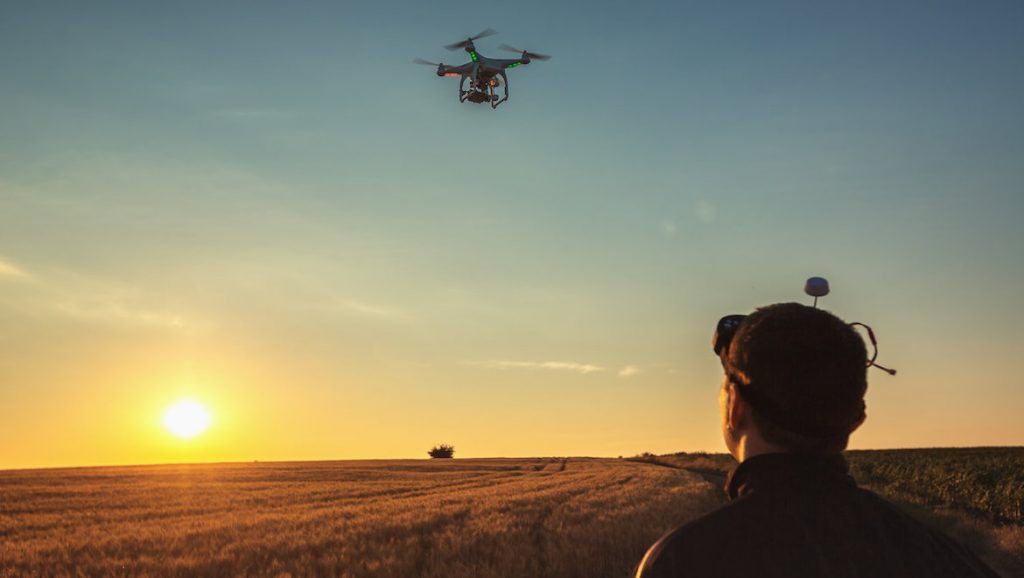
Drone operators will soon face the same mandatory reporting requirements as traditional aircraft, as the ATSB introduces its biggest overhaul in reporting rules in nearly two decades.
The move was made in recognition of the growing prevalence of unmanned aerial devices in shared airspaces, and the rapidly changing nature of commercial aviation in light of drone technologies, according to a spokesperson from the ATSB.
The new rules will also bring reporting standards for drones to be largely in line with requirements across the aviation industry.
It comes after the safety bureau reported a rapid increase in ‘near encounters’ between traditional aircraft and drones as well as a number of high-profile incidents, including one of a 3.5-kilogram unmanned device crashing through a high-rise window in Sydney, injuring one person inside.
It also comes as authorities grapple with the long-term problem of how to manage increased air traffic in Australia’s airspace, as drones begin to take the place of freight couriers, agricultural aviation, and the eventual emergence of UAV air taxis.
From 30 September 2021, the Transport Safety Investigation Regulations Act 2003 will be replaced with the new Transport Safety Investigation Regulations Act 2021.
The new regulations specify that operators of certain remotely piloted aircraft (RPA) will now be required to make safety and occurrence reports to the ATSB in a timely fashion.
Previously, there was no formal requirement for operators to report safety incidents to the ATSB, however major incidents were often still flagged to the safety investigator.
Operators or other ‘responsible persons’ deemed to have deliberately failed to adhere to mandatory reporting requirements could be referred to the Australian Federal Police for investigation, and face public prosecution – though this would be an incredibly rare repercussion.
According to the bureau, the new reporting requirements will allow it to better measure and assess safety issues and monitor trends in the operation of RPAs in the growing drone sector.
Under the new regulations, drones will be categorised under either Type 1 RPAs or Type 2 RPAs.
Type 1 RPAs include drones that have been certified against relevant airworthiness standards (type certification), medium drones that weigh over 25 kilograms, and large drones that weigh over 150 kilograms.
Under the revised requirements, Type 1 operators will be required to immediately report to the ATSB RPA occurrences involving:
- death or serious injury;
- accidents;
- loss of a separation standard with aircraft; and
- serious damage to property.
Meanwhile, less serious incidents and occurrences are required to be reported to the ATSB within 72 hours.
Routine reportable matters include:
- any procedure for overcoming an emergency;
- when flight into terrain is narrowly avoided;
- occurrences that result in difficulty controlling the aircraft, including:
- aircraft system failure;
- weather phenomenon; and
- operation outside the approved flight envelope.
All other drones over 250 grams are considered Type 2 RPAs, and will have fewer reporting requirements.
This distinction is made on the basis that ATSB investigations are unlikely for these operations unless there is serious risk of harm to people or significant third-party property, the bureau said.
Occurrences involving Type 2 RPAs will generally only need to be immediately reported to the ATSB if they involve death or serious injury.
Less serious accidents and damage to Type 2 RPAs will need to be reported within 72 hours, the ATSB said.
This includes serious property damage, loss of separation, missing aircraft, aircraft sustaining serious damage, or aircraft inaccessible.
Drones that do not fall into either of these Type 1 or Type 2 RPA fields have no mandatory reporting requirements under these new regulations.
“RPAs are an emerging form of commercial aviation that will benefit from investigation into systemic safety issues to help prevent future accidents,” said ATSB chief commissioner Angus Mitchell.
“The recognition of transport safety issues associated with the operation of RPAs, will be a welcome development, and provide greater certainty for commercial operators and enthusiasts alike.
“For the ATSB, it’s an exciting opportunity to apply our world-leading aviation safety investigation capabilities, and improve safety outcomes in a growing field.”
The ATSB noted to drone operators that making a report to the bureau is not a time-consuming process, and the ATSB investigated incidents from a ‘no blame’ perspective, prioritising improved safety outcomes.















